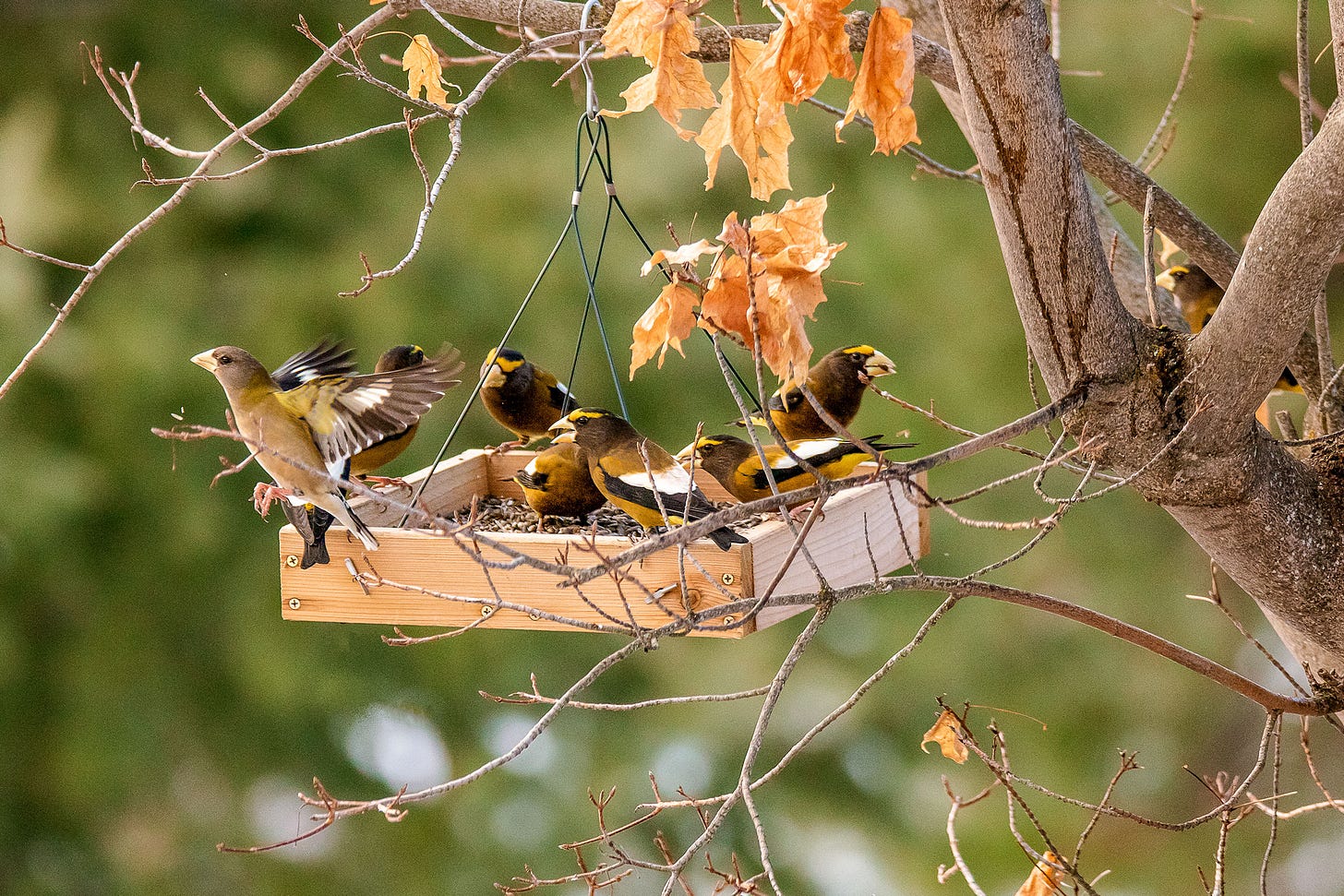The Weird Times: Issue 29, November 29, 2020
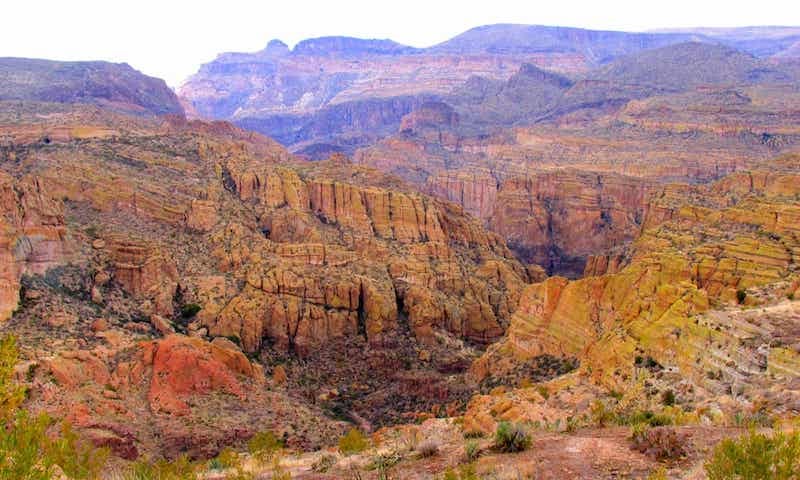
Revealed: Trump officials rush to mine desert haven native tribes consider holy, Annette McGivney, The Guardian, Nov 24, 2020
Since January, San Carlos Apache tribal member Wendsler Nosie Sr has been sleeping in a teepee at a campground insouth-eastern Arizona’s Oak Flat, a sprawling high desert oasis filled with groves of ancient oaks and towering rock spires.
It is a protest in defense of “holy ground” where the Apache have prayed and performed ceremonies for centuries.
A dozen south-western Native American tribes have strong cultural ties to Oak Flat. But the Trump administration, in its waning days, has embarked on a rushed effort to transfer ownership of the area to a mining company with ties to the destruction of an Aboriginal site in Australia, the Guardian has learned.
“We were in the fourth quarter with two minutes left in the game. And then Trump cheated so now we only have one minute left,” said Nosie, who was a football quarterback in high school. “Everybody has to mobilize now to fight this.”
+++
Across the evening sky, all the birds are leaving
But how can they know it's time for them to go?
Before the winter fire, I will still be dreaming
I have no thought of time
For who knows where the time goes?
Who knows where the time goes?
—Sandy Denny, Who Knows Where the Time Goes
+++
COVID-19 Is a Symptom of a Planet that has been Pushed Past a Tipping Point, Nafeez Ahmed, Vice, Nov 23, 2020
The COVID-19 pandemic signals that civilization has breached a major ‘tipping point’ that could pave the way for a dangerous new era of interacting ecological emergencies.
Scientific evidence accumulated over the last five years suggests that the pandemic didn't come out of the blue, but is a direct consequence of industrial civilization's breaching of key ‘planetary boundaries’—these are important natural ecosystems needed to maintain what scientists describe as the ‘safe operating space’ for human survival on the planet.
The more we destabilize those boundaries, the more this safe space for human habitation shrinks—and COVID-19 suggests that the world economy is now entering a volatile new phase of chronic instability due to not just one crisis, but the interaction of many crises including climate change, resource bottlenecks, food system failures and civil unrest. It is the escalating synergy between these crises, each of which is experiencing its own tipping points, which points to the risk we are crossing a planetary threshold in the global system.
+++
How to Fix Economic Inequality: An Overview of Policies for the United States and Other High-Income Economies. Peterson Institute for International Economics white paper.
“Now at a time of acute health and economic crisis, widening divisions are raising moral, social, economic, and political challenges. Many experts argue that longstanding US policies that widened inequality have also exacerbated the pandemic's impact. As the United States and other countries strive to rebuild their economies, governments have an opening to alleviate unfair economic disparities and improve access to opportunities.”
The United States is the world’s most unequal high income country in the world. The contradictions of late-stage extractive capitalism are becoming impossible to ignore, even for capitalists.
+++
Tonight police will blow their sirens
And I’ll turn away
Tonight belief will carry Science
To a better day
—Patty Larkin, Nothing Else Really Matters
How the Evening Grosbeak Got its Misleading Name, Kenn Kaufman, Audubon, Nov 24, 2020
…in August 1823, Joseph Delafield was in western Ontario, and he wrote to William Cooper:
“At twilight, the bird which I had before heard to cry in a singular strain, and only at this hour, made its appearance close by my tent, and a flock of about half a dozen perched on the bushes in my encampment . . . I recognized this bird as similar to one in possession of Mr. Schoolcraft, at the Sault Ste. Marie. Its mournful cry about the hour of my encamping, (which was at sunset) had before attracted my attention, but I could never get sight of the bird but on this occasion. There is an extensive plain and swamp . . . My inference was then, and is now, that this bird dwells in such dark retreats, and leaves them at the approach of night.”
…
John K. Townsend spent time in the Pacific Northwest in spring 1836, and he wrote to Audubon about the grosbeaks: “The accounts that have been published . . . are, I think, in many respects incorrect. In the first place, it is stated that they are retiring and silent during the day, and sing only on the approach of evening. Here they are remarkably noisy during the whole of the day, from sunrise to sunset.”
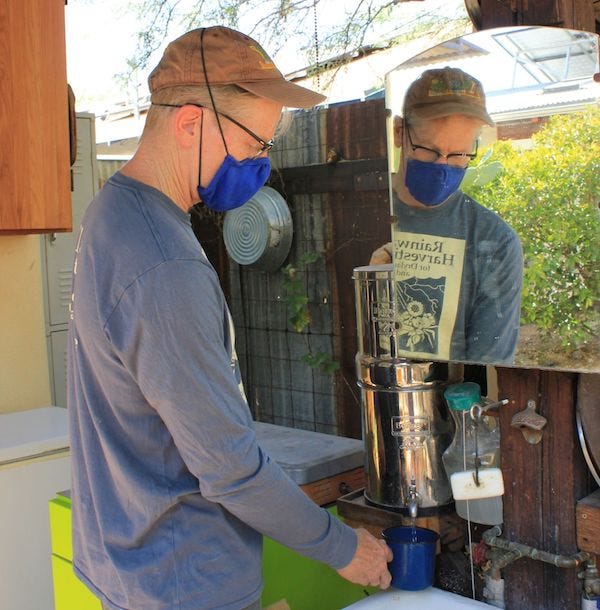
A Desert City Tries to Save Itself With Rain: Tucson, Arizona, is giving residents financial incentives to harvest their rainwater as the desert city works to become carbon neutral by 2030, Chris Malloy, Bloomberg CityLab, Nov 23, 2020
In an average year, Brad Lancaster can harvest enough rain to meet 95% of his water needs. Roof runoff collected in tanks on his modest lot in Tucson, Arizona — where 100 degree days are common in the summer months — provides what he needs to bathe, cook and drink.
When Lancaster gets thirsty, he sips filtered rain “known as sweet water,” he says, having never picked up salt from soil. When he wants a hot shower, he places his outdoor shower’s water tank in the sun. To irrigate his fruit trees beyond the Sonoran Desert’s two rainy seasons, which bring the vast majority of Tucson’s precipitation, he uses fresh rainwater or greywater — the latter being, in his case, used rainwater leftover from the shower, sink, or washing machine.
“More rain falls on the surface of Tucson in a typical year than the entire population of Tucson consumes of municipal water in a year,” says Lancaster, author of Rainwater Harvesting for Drylands and Beyond. “So we have more water than we need most years — if we harvest it and reinvest it as opposed to draining it away.”
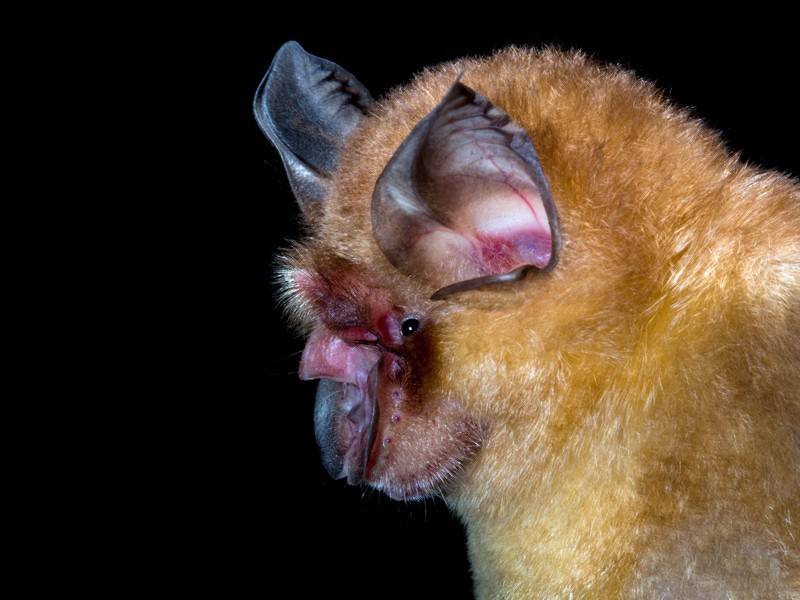
Coronaviruses closely related to the pandemic virus discovered in Japan and Cambodia, The viruses, both found in bats stored in laboratory freezers, are the first SARS-CoV-2 relatives to be found outside China, Smitri Mallapaty, Nature, Nov 23, 2020
Two lab freezers in Asia have yielded surprising discoveries. Researchers have told Nature they have found a coronavirus that is closely related to SARS-CoV-2, the virus responsible for the pandemic, in horseshoe bats stored in a freezer in Cambodia. Meanwhile, a team in Japan has reported the discovery of another closely related coronavirus — also found in frozen bat droppings.
The viruses are the first known relatives of SARS-CoV-2 to be found outside China, which supports the World Health Organization’s search across Asia for the pandemic’s animal origin. Strong evidence suggests that SARS-CoV-2 originated in horseshoe bats, but whether it passed directly from bats to people, or through an intermediate host, remains a mystery.
+++
Climate crisis: CO2 hits new record despite Covid-19 lockdowns, Drop in emissions this year is a ‘tiny blip’ in buildup of greenhouse gases, UN agency says, Damian Carrington, The Guardian, Nov 23, 2020
“The lockdown-related fall in emissions is just a tiny blip on the long-term graph. We need a sustained flattening of the curve,” said Petteri Taalas, the WMO secretary-general. “We breached the global [annual] threshold of 400ppm in 2015 and, just four years later, we have crossed 410ppm. Such a rate of increase has never been seen in the history of our records.
“CO2 remains in the atmosphere for centuries. The last time the Earth experienced a comparable concentration was 3m-5m years ago, when the temperature was 2-3C warmer and sea level was 10-20 metres higher than now. But there weren’t 7.7 billion [human] inhabitants.”
The WMO Greenhouse Gas Bulletin, published on Monday, shows CO2 in the atmosphere is now 50% higher than in 1750, before the Industrial Revolution. CO2 traps two-thirds of the heat retained on the Earth’s surface by greenhouse gases, and this warming effect has increased by 45% since 1990.
Methane, which is produced by cattle, rice paddies and fossil fuel exploitation, is responsible for 17% of the heating effect. Its concentration is now two-and-a-half times pre-industrial levels. Another important greenhouse gas is nitrous oxide, which comes from overuse of farm fertiliser and forest burning. It is now 23% higher than in 1750.
…
Talaas said a “complete transformation of our industrial, energy and transport systems” was needed. “The changes are economically affordable and technically possible and would affect our everyday life only marginally,” he said. “It is welcome that a growing number of countries and companies have committed themselves to carbon neutrality. There is no time to lose.” (emphasis added)
+++
Testing sewage can give school districts, campuses and businesses a heads-up on the spread of COVID-19.Charles Gerba and Robert Glennon, The Conversation, Nov 24, 2020
Monitoring wastewater gives public health officials and facility managers four to 10 days of advance notice, while infected individuals are still asymptomatic, to take steps to reduce the spread of COVID-19. And it can detect the genetic signal of the virus in sewer water generated by a discrete segment of the community, such as a university, public school or factory. At the University of Arizona it has enabled the school to effectively test all dorm occupants simultaneously, anonymously, inexpensively and nonintrusively.
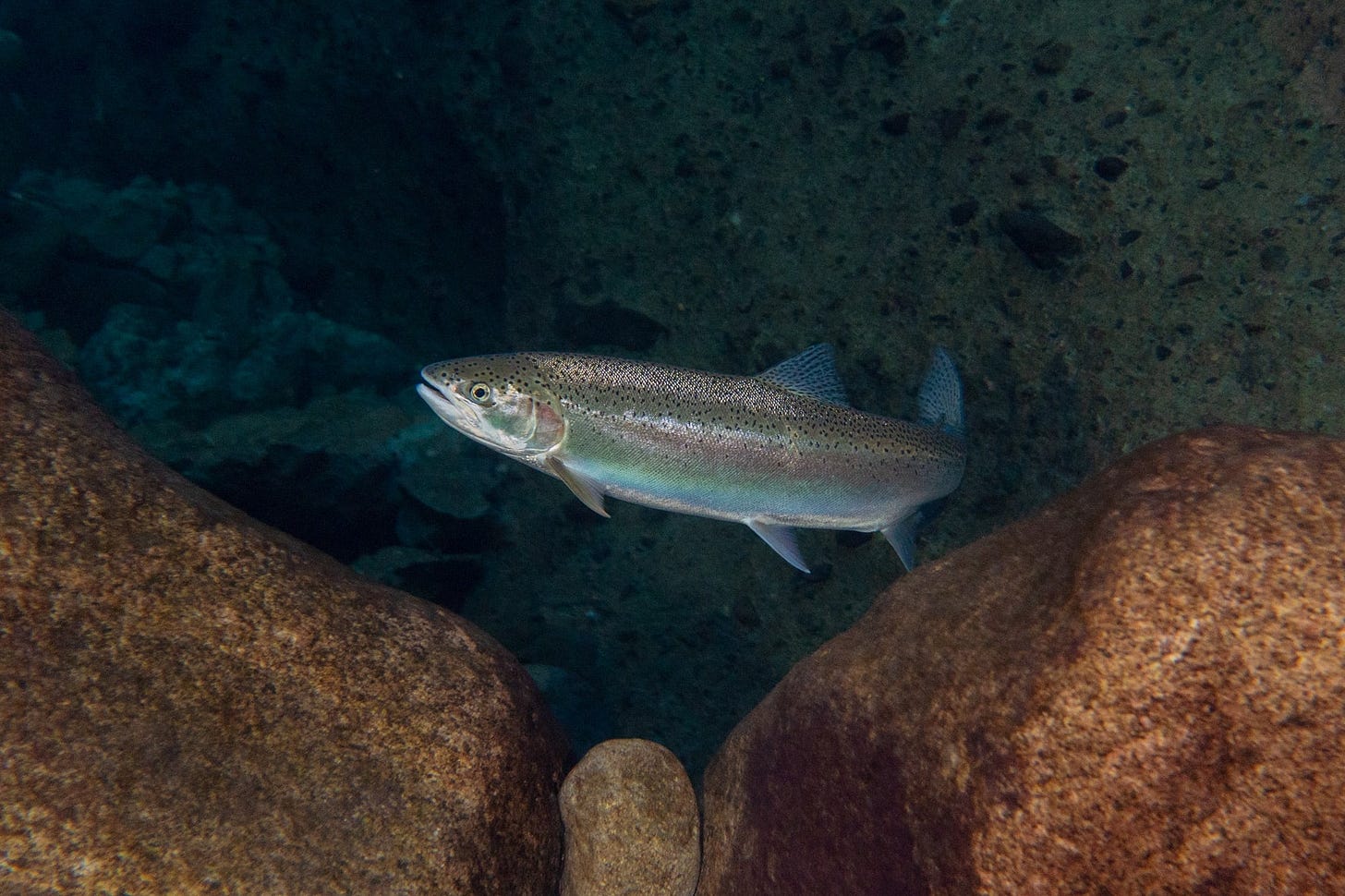
‘A lost run’: logging and climate change decimate steelhead in B.C. river, When zero fish showed up for a winter count in the Gold River on Vancouver Island, their absence hinted at a much larger story of how and why this species is disappearing throughout the province, Stephanie Wood, The Narwhal, Nov 26, 2020
The Nootka Sound Watershed Society recently formed the Solutions for Steelhead task force to rebuild steelhead stocks and alert people to the fact that the iconic species is at risk of being lost.
“It just seems like we’re not paying enough attention to these things. … It really does feel like this may be a lost run,” said O’Neill, who is a member of Solutions for Steelhead.
The main causes of the Gold River steelhead’s plight are climate change and stream degradation caused by logging, said Roger Dunlop, a biologist with Uu-a-thluk, Nuu-chah-nulth Tribal Council’s aquatic resource management organization, a board member of the Nootka Sound Watershed Society and a member of Solutions for Steelhead.
To save steelhead, “the biggest thing we could do is reduce the rate of cut in the Gold River watershed,” he said.
+++
Ilana Cohen, Inside Climate News, Nov 28, 2020
Research published by Yale's Center for Business and the Environment has found that pollinator-friendly solar can boost crop yields, increase the recharging of groundwater, reduce soil erosion and provide long-term cost savings in operations and maintenance. The research also found that by creating a cooler microclimate, perennial vegetation can increase the efficiency of solar panels, upping their energy output. [snip]
Bees and other pollinator populations have steadily declined in recent years, in part as a result of climate change, a trend that a 2020 study found could threaten U.S. crop yields and even pose risks to global food security.
Pollinator-friendly solar provides an approach to both the pollinator crisis and the climate crisis that is attractive aesthetically and economically, and potentially scalable. By planting a deep-rooted mix of native flowers and grasses around and even between solar panels that can provide abundant and healthy food for pollinators, developers can provide clean energy while also expanding pollinator habitat.
+++
The new wave of fishless fish is here, Rowan Jacobsen, Outside, Nov 24, 2020
Food scientists and marketers are creating healthy, plant-based, imitation tuna, crab, and shrimp that look and taste like the real thing. Better yet, switching to faux seafood will help curb our reliance on an international fishing industry that has become an environmental and human-rights disaster.
Good Catch, a brand of faux tuna, made tasty fish burgers and cakes. It even held up beautifully in a pasta al tonno, simmered in garlicky tomato sauce. In other words, it passed the plug-and-play test. So long, Big Tuna
Ed. note: this is a long article, but please do click through and read it. Destruction of our oceans is imminent and must be turned around as soon as possible.
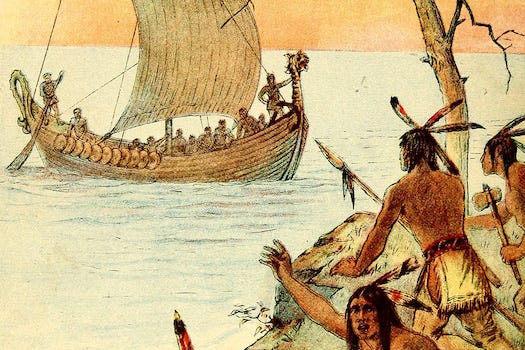
How (Not) to Teach Kids about Native Culture, Even well-intentioned books for children can romanticize (or demonize) Native Americans. But better materials exist. Livia Gershon, JSTOR Daily, Nov 23, 2020
It’s Thanksgiving season, which in many elementary schools means it’s time to celebrate Native Americans. And yet the books teachers and administrators choose for these units sometimes convey unintended messages, stereotyping Native cultures.
…
In a 2007 paper, children’s literature scholar Debbie Reese offers guidance to teachers who want to do a better job of choosing books to reflect Native American experiences. Reese describes reading Gerald McDermott’s 1974 picture book Arrow to the Sun: A Pueblo Indian Tale. As a Nambé Pueblo woman herself, Reese found that several aspects of the book seemed confused. In the book, “kivas” are frightening places full of trials and dangers, she writes, “but I know kivas are safe places of worship and instruction.” The book also describes its main character being ostracized because he doesn’t know who his father is.
“To me that does not ring true either,” she writes. “In my experience, children are born into an extended family/community that loves and care for them. The stain of illegitimacy is Euro-American, not Puebloan.”
For anyone planning a unit on or interested in accuracy in Native American history and stories, check American Indians in Children’s Literature, which offers a wealth of information about the representation of Native peoples in kids’ books and suggestions for worthy books to explore.
No Walk is Ever Wasted, Matthew Beaumont, Paris Review, Nov 17, 2020
“There’s no such thing as lost steps! If one were to search for the principle that epitomizes what, in an echo of the title of a book by the late Marshall Berman, might be called “modernism in the streets,” one could probably find it in this exclamation. It informs the writings of all those authors who consistently sought to make the cities with which they were familiar seem new or strange by traversing them aimlessly, sometimes desperately, on foot, in a state of heightened susceptibility to the relentless stimuli of the streets. But it is also a doctrine that, almost a century later, still resonates in the cities of today.
Certainly, it is the article of faith according to which, as a committed, even devout pedestrian, I like to live. No walk, as far as I am concerned, is ever wasted. In contrast, for example, to a car journey. In a city—especially one dominated by cars, by individualistic rather than collective, private rather than public modes of transport—it is walking that habitually makes me feel alive. It makes me feel both vitally connected to the city’s ceaseless circuits of energy and, at the same time, delicately detached from them. Stimulant, then, and narcotic.
In the twenty-first century, in cities that are the site of acutely disorienting cycles of creative destruction, where pedestrians are increasingly inured to the environment they more and more mechanically inhabit, not least because of their dependence on the technology of smartphones and other handheld devices, we need another modernism of the streets. And we need to celebrate some of those embattled individuals for whom, in the nineteenth and the first half of the twentieth centuries, at the high tide of industrial modernity, this activity was a sort of spiritual imperative; a vocation.”
+++
E-Note
If the historians will not say it, then the poets must. Trump destroyed America by revealing what was in our nation’s marrow. His embracing of white supremacy was simply an act of honesty. His claim that he was not a racist was just another lie. There are too many witnesses that can testify to this. Will his family members and former employees please step forward?
The destruction of America was made possible by the country’s addiction to entertainment and the worship of Hollywood. Trump was a Star turned comet, blazing across the 5O states and willing to watch California burn. His slogan “Make America Great Again” was simply snake oil turned into words and shaped into caps. It was a dress rehearsal for fascism and all that is “No” in the world.
Obama was America’s first and last Black president. He was a sentinel elected to stand in front of a collapsing country. When our Towers were destroyed in New York, the nation sung our anthem as it echoed the deep and heavy blues. For a moment we were one, but soon we turned into blue and red states. The rest is simply Babel.
So where are we? Biden is the “hyphen” between America and the New America. He is between and linked to Obama and Harris. Yes, Black people had his back and got him elected in 2020. His selection of Harris as VP is not a symbolic crack in a glass ceiling, but, instead, the lifting of the dark fog of racism and sexism. It’s the ability of a New America to finally learn how to say “Kamala.” Our tongues are ready to taste the sweet honey in the rock out of which America was built. Gone is the rooted bitterness of the past.
A New America is rising like a New Atlantis. It will require a new man and a new woman to govern it. Our new bones cannot wear an old flesh or hand-me-downs from Europe. Our past must now become our past. America was a great experiment that failed, thanks to Trump, the mad scientist. The lab exploded and our image was shattered. How we now see ourselves begins in our imagination. Hughes once attempted to dream a new world. In 2020 we were given back our sight. We voted to see.
Welcome now, the “New America.” This is not about reconstruction. It’s the beginning of a new dawn, the lifting of fertile soil by hands of many colors, the planting of new flowers and trees. Oh, listen to your heart with your ears. Let us sing love into the air. Oh yes - this New America will BE.
—E. Ethelbert Miller
+++
Here is a short list of books I am recommending for the holidays. Bookshop.org is offering free shipping through Monday, November 30 on all orders.
PARALLEL PERSPECTIVES by Holly Gordon and Ward Hooper.
The eye-arresting images in this original contemporary art book feature two popular mediums, painting and photography. Paired with the dialog of the artists, the narrative becomes an intimate conversation with the reader. Combining life, loss, serendipity and art, it portrays two artists, whose conceptually similar work evolved independently until social media brought them together. Their collaboration continues to produce treasures of stunning, memorable beauty.
THE MELON by Amy Goldman - will entice and educate, whether you are a passionate gardener, a locavore, or simply delight in the inherent beauty and evanescence of the fruits of the vine.
CONNECTICUT YANKEE, An Autobiography by Wilbur L. Cross - Equal parts nostalgic, witty, self-serving, and frank, Connecticut Yankee is an entertaining and informative memoir of the state and a scholar who shaped it. Connecticut native, Yale graduate, Yale professor and dean, and finally, unlikely Governor of the State of Connecticut during the crucial Depression years, Wilbur L. Cross's autobiography tells a great American story.
BOATS AGAINST THE CURRENT (Centennial 2020 edition) by Richard Webb - The Great Gatsby may be one of America's essential novels. Boats Against the Current is an essential document for anyone who has read the book and wondered at the fantastical world whose story it tells.
YOUR VOICE IS YOUR SUPERPOWER by Jessica and Sandy Bohrer - What is free speech and why is it so special? Your Voice is Your Superpower tells you why your voice matters and how you can use it and also why we must protect everyone's right to free speech.
THE CHANGE MAKER’S PLAYBOOK by Amy Radin - 2020 Book Excellence Award Winner. How any leader can deliver business-changing innovation now.
Bookshop.org is an online bookstore with a mission to financially support local, independent bookstores.
What did you do for Thanksgiving? We ended up "home alone" and while it was weird, I recognize it now as a necessary acquiescence to virus world, imposing its meaning on humanity.
What virus being is telling us is — STOP WHAT YOU ARE DOING. By all measures, we are still not listening very well.
Stay safe, stay healthy, and remain vigilant for any and all efforts to derail democracy.




